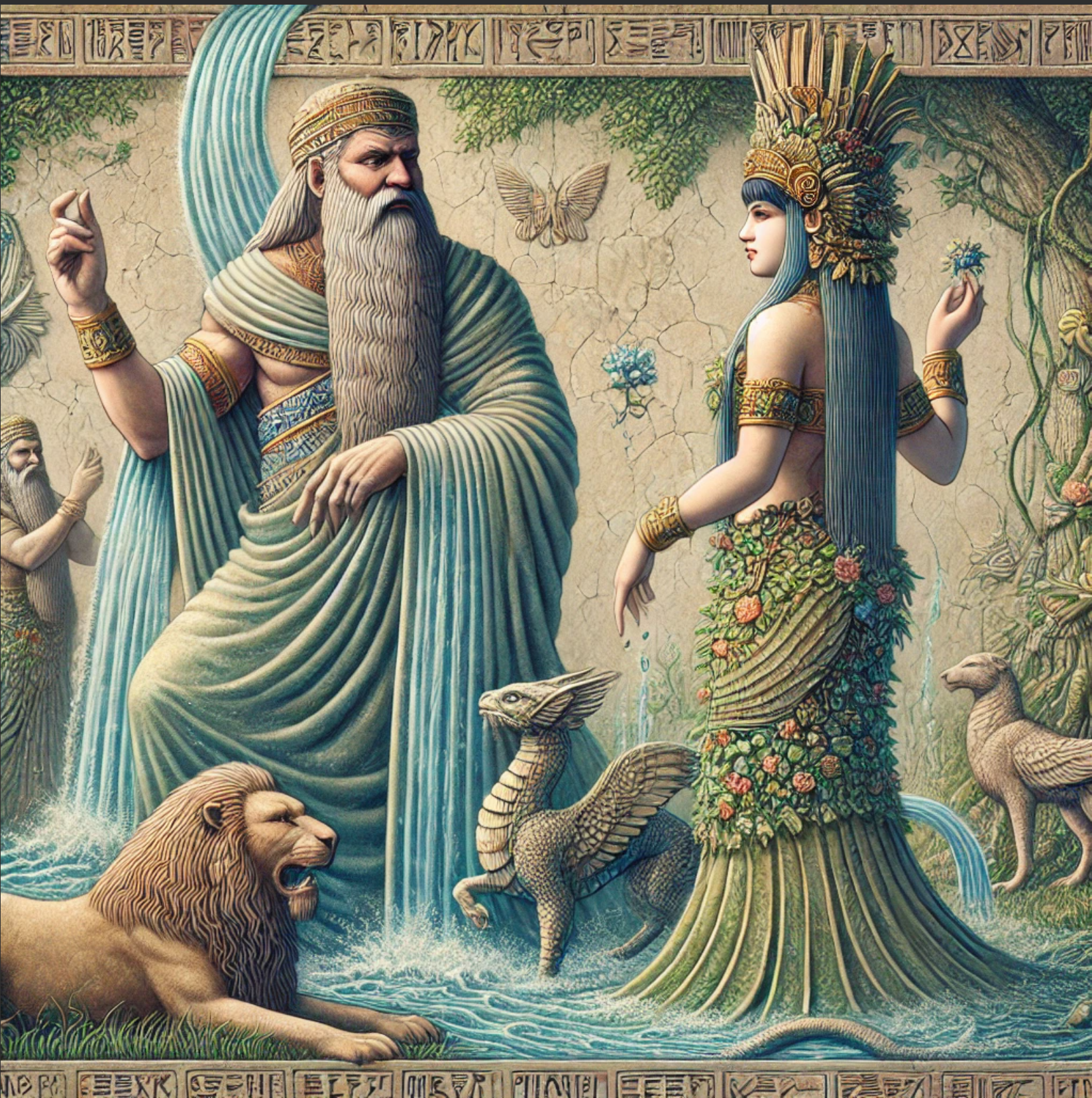Enki and Ninhursag

Published on: February 8, 2025
Enki and Ninhursag vs. Genesis: A Comparative Analysis from a Christian Perspective
Abstract
The Sumerian myth of Enki and Ninhursag and the biblical account of Genesis share certain thematic similarities, including the concept of a primordial paradise, the involvement of divine beings, and the emergence of suffering due to specific actions. This article examines these parallels while emphasizing key differences in theology, moral lessons, and implications from a Christian perspective. By exploring the monotheistic framework of Genesis against the polytheistic and mythological elements of the Enki and Ninhursag narrative, this study highlights the distinctive worldview of the Bible and its theological significance.
Introduction
Ancient Mesopotamian mythology has long been a subject of comparison with biblical texts. One prominent narrative from Sumerian literature, Enki and Ninhursag, presents a vision of paradise in Dilmun, a land free of suffering and death. Similarly, Genesis 1–3 describes the creation of the world and humanity in the Garden of Eden, followed by the Fall. While both texts depict an idealized world disrupted by a significant event, their theological and moral implications are profoundly different. From a Christian perspective, Genesis is not merely another ancient Near Eastern myth but a divine revelation detailing the true origins of humanity and the nature of sin.
Comparison of Key Themes
| Category | Enki and Ninhursag (Sumerian Mythology) | Genesis (Bible, Christian Perspective) |
|---|---|---|
| Paradise | Dilmun, a land without suffering or death but without moral significance. | Eden, a sacred place where humanity enjoys direct communion with God. |
| Divine Beings | Multiple gods interact, engage in romantic relationships, and exhibit human-like flaws. | One sovereign God creates and sustains everything without divine conflict. |
| Cause of Suffering | Enki’s indulgence in sacred plants leads to temporary illness. | Adam and Eve’s disobedience leads to sin, death, and separation from God. |
| Role of Women | Ninhursag is a creator and healer but remains subject to Enki’s actions. | Eve is created as Adam’s helper; both share responsibility for the Fall. |
| Moral Consequences | The story lacks a lasting moral consequence; suffering is resolved through divine intervention. | Sin results in eternal consequences, requiring divine redemption. |
| Redemptive Plan | No concept of salvation; problems are resolved through immediate divine action. | The Fall introduces the need for redemption, fulfilled through Jesus Christ. |
The Christian Perspective on These Differences
From a Christian standpoint, the Genesis account is not derived from Mesopotamian myths but is a divinely inspired, historical revelation (2 Timothy 3:16). While Genesis and Enki and Ninhursag share narrative motifs common to ancient Near Eastern literature, their core messages differ significantly:
- Monotheism vs. Polytheism: Genesis presents one sovereign God, while Sumerian mythology includes multiple fallible deities.
- Moral Consequence vs. Temporary Conflict: The Bible teaches that sin has eternal consequences, whereas the Sumerian myth offers a temporary resolution.
- Redemptive Plan: Christianity affirms that humanity’s fall is rectified through Jesus Christ, unlike Mesopotamian myths that rely on immediate divine intervention.
Conclusion
While the Enki and Ninhursag myth provides valuable insights into ancient Mesopotamian beliefs about creation and divine interaction, it fundamentally differs from Genesis in purpose, theology, and moral significance. From a Christian perspective, Genesis is not merely a variation of ancient myths but a unique, God-given revelation that explains the origin of humanity, the nature of sin, and the promise of salvation. The distinctions between these narratives highlight the profound difference between polytheistic myths and the biblical doctrine of creation, fall, and redemption.
References
- Black, J. A., Green, A., & Rickards, T. (2004). Gods, Demons, and Symbols of Ancient Mesopotamia: An Illustrated Dictionary. University of Texas Press.
- Kramer, S. N. (1981). History Begins at Sumer: Thirty-Nine Firsts in Recorded History. University of Pennsylvania Press.
- Walton, J. H. (2009). The Lost World of Genesis One: Ancient Cosmology and the Origins Debate. IVP Academic.
- Dickson, K. (2007). "Enki and Ninhursag: The Trickster in Paradise." Journal of Near Eastern Studies, 66(1), 1-32.
- Beale, G. K. (2015). A New Testament Biblical Theology: The Unfolding of the Old Testament in the New. Baker Academic.
- Wenham, G. J. (1987). Genesis 1–15 (Word Biblical Commentary). Thomas Nelson.
- Sarna, N. M. (1989). Understanding Genesis. Schocken Books.